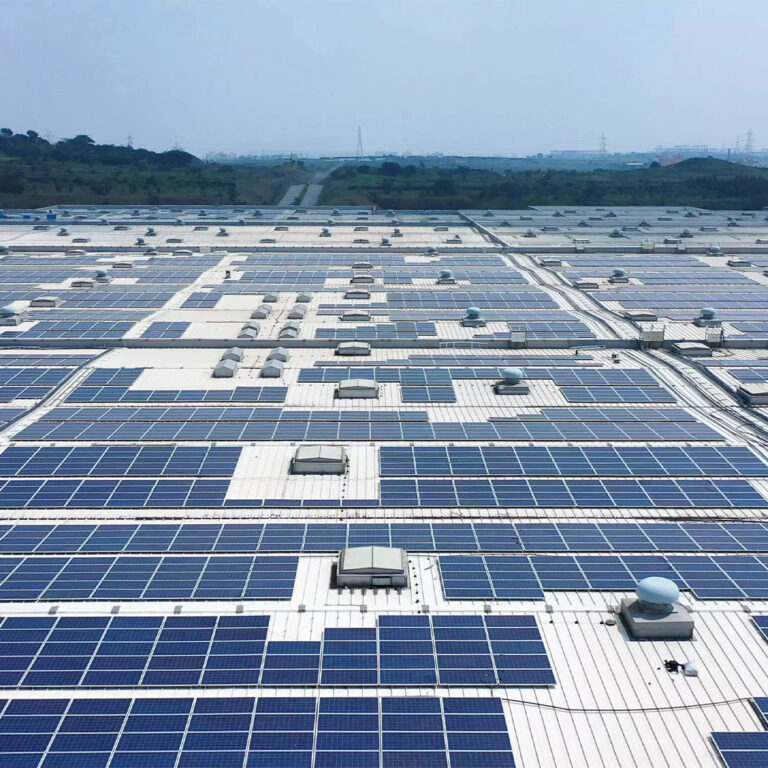Innoprudent Technologies is India’s leading Off-Site Solar and Wind-Solar Hybrid Solution Marketplace.
OPEX MODEL (ZERO INVESTMENT FROM THE CLIENT)
Our RE Developer Partner funds and installs a rooftop solar power plant on customer’s premises. Solutions are customized to suit customer’s requirements and include carports, superstructure etc.
The Process
- Customer signs a long-term Power Purchase Agreement (“PPA”) with RE Developer
- RE Developer invests 100% of the capital required for the project
- RE Developer designs, procures, installs, commissions & maintains the solar plant.
- All regulatory approvals are taken care by RE developer
The Solar tariff is lower than the prevailing grid tariff, leading to significant savings for each unit of electricity throughout the PPA term.

CAPEX MODEL

The Process
- In this model, the Customer invests entire capital
- Our RE Developer Partner designs, procures, installs & commission the entire roof top solar planton customer’s premises.
- Solutions are customized to suit customer’s requirements and include carports, superstructure etc.
- All regulatory approvals are taken care by RE developer
- Customer can avail accelerated depreciation & achieve faster payback
OFF SITE (OPEN ACCESS) SOLUTIONS
This is the ideal solution when the industries are space restricted and have huge energy requirements.
The Process
RE Developer installs large scale solar plants at a location away from customer site and wheels electricity to the client using stateowned transmission network.
Customer signs a long-term Power Purchase Agreement (“PPA”) with RE Developer
The developer designs, procures, installs commissions and maintains the solar plant
The Solar tariff is lower than the prevailing grid tariff, leading to significant savings for each unit of electricity purchased throughout the PPA term

FREQUENTLY ASKED QUESTIONS
- Solar panels are made of highly conductive materials. When the sun’s rays hit the solar panels, they absorb the energy and convert it to direct current (DC) electricity.
- Since most homes and businesses use alternating current (AC) electricity, your solar-generated DC energy will pass through an inverter to become AC electricity. Then it flows through your property’s wiring and behaves just like the power you’ve been using your whole life.
- Solar Panels generate clean energy with zero greenhouse gas emissions into the atmosphere which contributes your bit to climate change.
- It helps you with potential savings on your electricity bills.
- Reduces heat gain to the premises making it cooler & consequently saving on air conditioning energy consumption
- Net metering is a system that allows homeowners or business owners to export any excess electricity generated by the plant which is unconsumed back into the grid. The exported electricity is credited to the electricity bills from Discom.
- In the OPEX (RESCO) model, supplier/financer invests, operates, and maintains solar power plant. Customers provide space and pay monthly electricity bills that are cheaper than existing bills. OPEX model is governed by PPA (Power Purchase Agreement) which specifies all contract terms including tariff, duration of contract, any yearly escalations etc.
- In the CAPEX model, customer pays upfront for the equipment, design, installation, and commissioning. Customers enjoy all the benefits from solar power plants such as reduced/nil electricity bill and tax savings from accelerated depreciation.
A solar power purchase agreement (PPA) is a financial agreement where a developer is responsible for the design, permitting, financing and installation of a solar power system on a consumer’s property at no cost. The developer sells the power generated to the consumer at a fixed rate that is typically lower than the grid rate. At the end of the PPA contract term, a customer may be able to extend the PPA, have the developer remove the system or choose to buy the solar energy system from the developer.
For industrial & commercial consumers, to install 100 kW of solar, you would require approximately 10,000 sq. ft. of shadow free space. For residential consumers, to install 1 kWp of solar, you would require approximately 100 sq. ft. of shadow free space.
Thesolar plant installation will not affect the quality or structural stability of your roof. We make sure of that by conducting rigorous analyses before beginning any work on the site.
Solar panels can absorb solar energy all throughout the year, whether it is spring, summer, autumn or even winter. However, they are most effective in direct sunlight. Solar panels will still work even when the light is reflected or partially blocked by clouds.
- Open access allows large users of power typically having connected load of 1 MW and above to buy cheaper power from the open market. The idea is that the customers should be able to choose within several competitive power developers instead of being forced to buy electricity from their existing electric utility. The power generated from a solar farm installed in a particular state and given to large consumers at significantly cheaper cost within that state.
- Third Party Power– In this model, a third-party investor or Solar developer invests in an Open Access project and sells the power to C&I customers through PPA. The developer is responsible for the cost of installation, operation, and maintenance. However, the buyer is liable to pay the Open Access charges incurred from the wheeling of power from the generated site to the buyer’s location.
- Captive/ Group Captive Model– In the captive model, the buyer makes an upfront capital investment in the Open Access project. The buyer owns, operates, and maintains the power generating asset. Open access charges are also applicable but unpredictable charges, such as the cross-subsidy surcharge and additional surcharge, are waived off. In addition, the buyer is also eligible to claim tax benefits through accelerated depreciation. Another variant of the captive model is the group captive model, wherein the Open Access project is developed for collective usage by many corporate buyers. The model is considered group captive if at least one of the corporate buyers holds a minimum of 26% of equity in the project and consumes at least 51% of the power generated.
